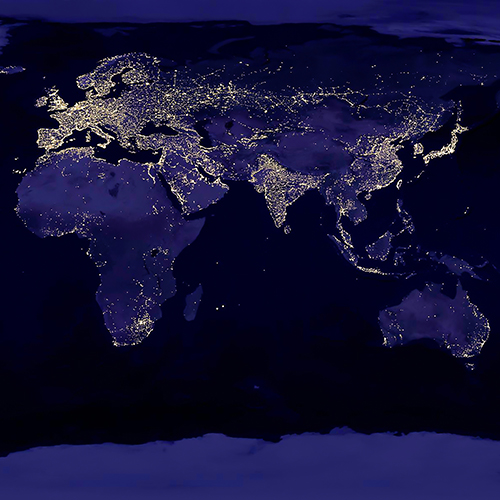21 September 2022

90 per cent of the world's light ends up in the sky, not on the ground.
From the ‘Saucepan’ to the ‘Southern Cross’ star gazing is a popular pastime for many budding astronomers. But as Australia’s cities continue to expand, finding a sky that’s dark enough to see the stars is becoming more and more difficult, say UniSA astronomers.
In search of dark skies – skies unaffected by unnatural light – a team of astronomy students will travel to the southern edge of the Flinders Ranges this weekend, to take advantage of the pristine skies of regional South Australia.
Led by UniSA astronomer and Adelaide Planetarium* presenter, Mary Adam, the Constellations of The Night Sky students will put their skills to the test as they view and identify the constellations visible from sunset to sunrise.
While this trip affords the group an unblemished view of the stars, Adam says she is concerned about the growing rate of light pollution.
“For years astronomers have been aware of the impact of light pollution on the night-time environment. But as our cities grow, so too does light pollution in the night sky,” Adam says.
“The main culprit of light pollution is street lighting, where 90 per cent of light ends up in the sky, not on the ground.”
Light pollution is light from artificial lights at night, that escapes upward and sideways creating glare, light trespass, and sky glow. This creates a perpetual twilight glow in the sky that washes out the wonder of the stars and the Milky Way.
“We are losing the dark at an alarming rate,” Adam says.
“As Adelaide grows, so does the light pollution. Not only is it affecting our view of the stars, but it is also impacting our wildlife. It’s now not uncommon to hear birds singing at night, as they still think it’s dusk.
“Less than 100 years ago, people looked up at the night sky and saw a blanket of twinkling stars; today, that has drastically changed. 100 years from now, people will be lucky to spot even a few stars.”
“More than 80 per cent of the world live under light-polluted skies, with the Milky Way hidden from more than one-third of humanity,” Adam says.
“In countries like Japan and China where there is an enormous amount of artificial light polluting the night skies of major cities, many people will live their whole lives without seeing a single star.
“We are unfortunately heading the same way. Unless the world starts to adopt strategies to reduce light pollution – such as replacing old streetlights with simple shielded lighting that is directed downwards – stars may soon be invisible to city and suburban dwellers.”
Notes to editors:
* The Adelaide Planetarium is celebrating its 50th birthday this year
Night light maps (to view light pollution in your local area):
…………………………………………………………………………………………………………………………
Contact for interview: Mary Adam E: Mary.Adam@unisa.edu.au
Media contact: Annabel Mansfield M: +61 479 182 489 E: Annabel.Mansfield@unisa.edu.au




